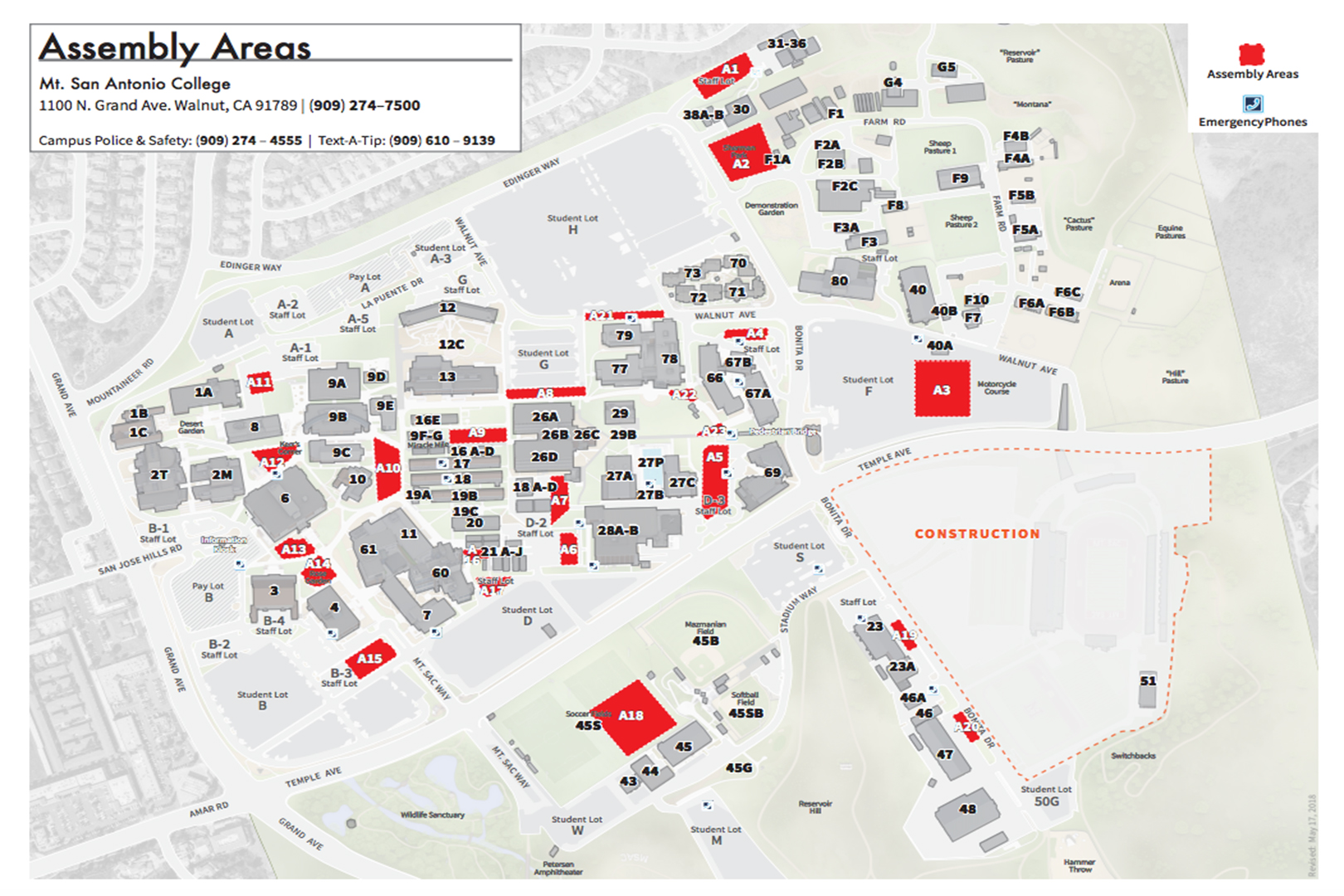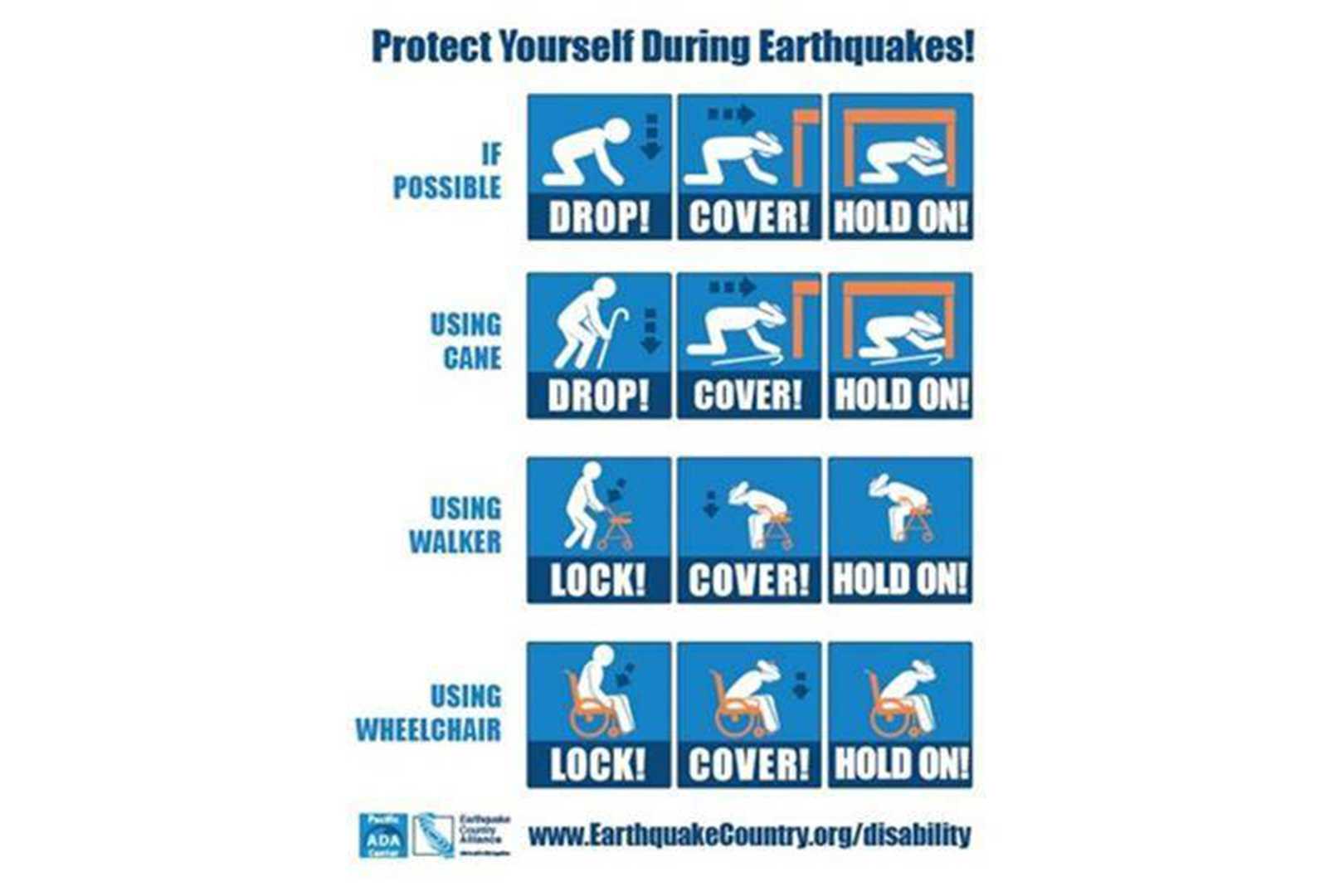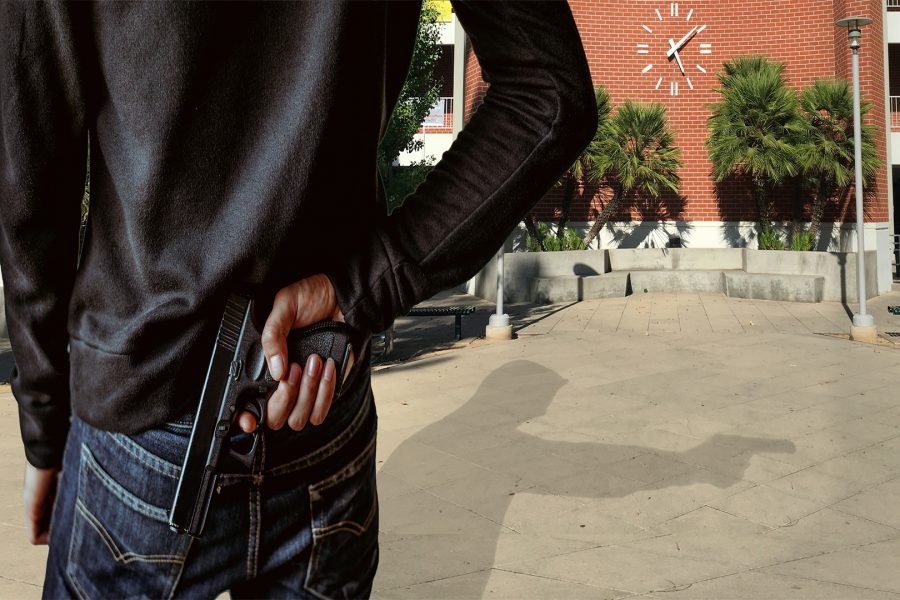The ground shakes, you smell smoke, or you hear “fireworks.”
People are confused, they have no clue what is going on.
They freeze, wait for instruction, or have no clue it’s happening – unaware in their own world.
What do you do?
Do you know what you’re supposed to do?
Several students do not know what to do in any emergency, and those same students are putting themselves in danger during Active Shooters, Earthquakes, Bomb Threats, and Fires.
Active Shooter Situation-
The best option during an active shooter situation is to run as far as you can from the situation, hide and barricade surroundings if you cannot run, and fight if they have found where you are hiding.
Run
In the event of an active shooter on campus, your first reaction should ALWAYS be to run away. Do your best to analyze the situation and the general location the sound of gunfire is coming from, and run the opposite way.
Just because you are at school, does not mean you need permission to leave, especially in a dangerous situation.
In an interview with Citizen Times, Mike Clumpner of Threat Suppression Incorporated, explains how active shooters are looking for the easier targets.
“If you have the opportunity to run away, run,” Clumpner said. “Most of the perpetrators are looking for easy targets and if someone runs they’re not going to chase them.”
Most of these active shooters are not trained professionals and do not know how to shoot. These shooters are usually not trained with firearms, and would struggle to shoot a target over 100 yards, especially if it is moving.
So run. If there was ever a time where the saying “run for your life” should be taken literally, it’s when there’s an active shooter out killing. He wants to kill you.
Drop all of your things. In a situation like this, the only important thing is your life, not your belongings.
Hide
Let’s say you cannot run because you are stuck in a room and you know the shooter is within close range. Your next option is to hide.
Most people’s first thought when they walk into a room is not, “where can I hide in this room if necessary,” but it should be.
Analyze each and every room you sit in for classes. Where is the nearest exit? Is that the only exit or are there more?
Next, locate possible hiding places. Remember when you were a kid and you nailed hide-and-seek like a champ? Well, this is where that skill comes in handy. Hiding places like cabinet spaces, separate rooms, under counters, closets or behind shelves. Any area can be a safe hiding place if you are out of the shooter’s sight.
If that active shooter can’t see you, they’re not going to waste time trying to find you. The shooter is looking for easy targets to kill.
“These people know they’re on the clock,” said Clumpner. “Responders are coming. They’re looking for easy targets, anything slows them down– they’re looking for someone else.”
Fight
Your last resort is to fight. Do not be afraid to fight for your life.
Fear can make you freeze in an intense situation, but this is one of those times where you cannot afford to hesitate.
Your first step is barricading that door. Do whatever you can to make that door hard to open for the shooter. Barricade all doors leading into that room with anything to slow him down. Desks, tables, shelves, TVs, or even chairs. Anything works if it’s going to hinder him from getting into that room.
Next, examine the room. What can be used as a weapon? How about those fire extinguishers? That stapler on that desk? The scissors next to it? Or even one of the other chairs you didn’t use on the door. Find something to defend yourself with.
If you’re in the room with other people, plan an attack with them. That shooter isn’t going to expect groups of people to come together and fight against him. They’re expecting you to be sitting ducks or hiding in fear. They’re expecting you to be afraid of them. Don’t be.
You Can Survive This
We are a generation of millennials. The post 9/11 and columbine era. We thrive off of social media and current events. We like to stay updated, informed, and be in trend.
So use that to your advantage. In times like this the more we openly talk about real-life situations such as school shootings, the more real it becomes. We begin to take action.
Educate yourselves on why horrible school shootings even happen in the first place as your first step into reacting to these attacks.
Take charge. Change your habits. Take in everything around you and be aware. And above all know that you have power to change the situation you are in. But most importantly, breathe.
Earthquake-
For an earthquake, drop and take cover and protect your head, neck, and spine. The best course of action is to leave the building after the initial earthquake, and get to flat land away from buildings to be safe from potential aftershocks.
These are the six steps on how to be safe during an earthquake on campus according to Mt.SAC police and campus safety.
1. Drop, cover and hold
As soon as you feel the earthquake, go under a desk or hide somewhere that is sturdy enough to protect yourself from falling debris.
Brace yourself and hold on until the shaking stops. Protect your neck, spine, and head with your hands.
Stay away from glass windows, cabinets and heavy objects. Do not run during an earthquake because injuries are more likely to occur. Contrary to what you may have been told, staying in a doorway is not advised.
2. Stay calm
Do not panic, and be sure to remain calm because panicking can lead to accidents.
Do not run out of the classroom because you are safer inside protecting yourself. Be aware that aftershocks can occur, so remain under the desk while protecting your head even when the earthquake stops due to aftershocks.
3. Evacuate
Only evacuate if there is not too much damage or if there is a smell of gas odor. After an earthquake, check yourself and others for injuries. While exiting the building be aware to not step on glass or debris. Do not use elevators, and only use stairs.
4. If you are outside
Be sure to stay away from buildings, street lights and utility wires. Stay in place until the shaking has stopped. If you are in your vehicle, be sure to stop in a clear area that is away from underpass, buildings, and trees.
5. Asking for help
After an earthquake, be sure to contact the proper authorities like police, campus safety, or emergency responders. If someone is injured, stay with then until responders have come to the scene.
6. Evaluate the campus
Be sure to know all the exits in your classes and building. Overview the campus map so you are well prepared on how to evacuate the school quickly, safely and adequately.
Bomb Threat-
At 150 feet from a bomb threat, an evacuation is mandatory. At 1,850 feet, an evacuation is preferred. In between those numbers is a range for sheltering in place.
While this sounds like a cautionary measure, Mt. SAC has had bomb threats in its past.
It was reported that a note was found on March 24, 2016 stating that a bomb would blow at Walnut High School and Mt. SAC around 11:30 a.m.
Mt. SAC emergency alert system sent out phone calls and text messages to students to evacuate the campus, and officials did the same.
The bomb threat caused a mass amount of traffic from students leaving campus in their cars without coordinated instructions that it left everyone stuck in the same spot for hours.
This resulted in a safety hazard of leaving the majority of students close by campus without movement away from where the threat was supposed to take place.
“I know it was a bit of a mess and we’ll work on that,” Walnut’s Sheriff Capt. Jeff Scroggins told the San Gabriel Valley Tribune after the incident.
Another threat came on Nov. 23 of that year when officials were notified of a possible bomb in building 60.
Mt. SAC mentioned that “business continuing in other areas” of the college. About 30 minutes after notification of the threat, the building was deemed safe for students and faculty to return.
There is not a specified list of instructions of where the safe areas for bomb threats are.
Up until now, the evacuation policy in the Police and Campus Safety section suggest for any emergency evacuation to walk away and leave your car behind.
The U.S. Department of Homeland Security suggests that prior to a bomb threat it is important to plan and prepare, develop a bomb threat response plan, and provide bomb threat response plan training to all personnel.
This is something that Mt. SAC seems to fail to do. Several faculty members do not know what to do in the case of a bomb threat.
“I’ve had no emergency training,” Journalism Adviser Toni Albertson said.
A clear indication that it is up to the student to be prepared. In an active threat situation, it is important to know the location of the bomb.
This will help decide whether to evacuate or shelter in place. The U.S. Department of Homeland Security lists 1,200 feet or more as a preferred evacuation distance for five pounds of explosives, equivalent to an average pipe bomb.
While 1,200 feet is preferred for five pounds, within 70 feet is a mandatory evacuation distance.
A briefcase, or suitcase, can hold up to 50 pounds of explosives so they recommend 1,850 feet or more as a preferred evacuation distance.
If you are anywhere in between the mandatory and preferred evacuation distances then it is recommended to shelter in place.
If you have to evacuate, be sure to use an evacuation route that has been searched and cleared, and take your belongings with you. Leave your car in the parking lot and come back for it later when it is safe.
Fire-
During a fire, knowing where the fire extinguisher and fire alarm are is important.
Call the department of public safety of Mt. SAC at (909) 274-4555 or use the extension 4555 on a campus phone.
If you hear a fire alarm, evacuate immediately and leave your belongings behind. Only gather your personal belongings if safe to do so.
Make sure to not open doors with handles that are hot. Always use the stairs and do not use the elevators.
Try to stay calm and do no panic. Proceed to the evacuation assembly areas and remain there until you receive further instructions.

You cannot presume everything is a drill and approach these issues with apathy.
*****
Disabled Students-
Writing any special emergency evacuation needs to the public safety office, instructors, classmates, Accessibility Resource Center for Students, more commonly know as ACCESS, supervisors, or co-workers.

There are evacuation chairs that are similar to chair sleds located by the stairs. Do not use an elevator during an evacuation, unless authorized to do so by fire or police personnel, as they may malfunction.
For more information about evacuations for those with disabilities, visit Mt. SAC’s ACCESS resource website.
*****
The campus website provides vague information on what to do in these situations, and often your instructor knows no better.
Your instructor likely did not receive training on how to handle emergencies, even though the mission statement includes workforce training as something the college is committed to providing.
Part of the Mt. SAC mission statement reads: “Specifically, the College is committed to providing quality education, services, and workforce training so that students become productive members of a diverse, sustainable, global society.”
Even more specifically, workforce training is defined as activities that develop or enhance skills of existing employees.
Despite the mission statement, several instructors have said that they have not been trained whatsoever on what to do in an emergency.
So it is on you to protect yourself, and use this checklist as your guide:
Be aware of your surroundings
During an Earthquake
In an Active Shooter Situation
During a Fire
During a Bomb Threat
Remember
To view the list of emergencies.









